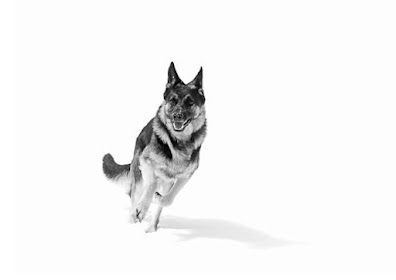Evaluate Breeding Values By DNA & Performance Tests
German Shepherd Dog Breeding Goal
Performance & DNA Tests Should Be a Must For Ethical Dog Breeding Practice
In an attempt to spread an awareness of ethical practice for dog breeding, Aringsburg German Shepherd Dog Bloggers seek to bring in this chapter that talks about how DNA tests can contribute in evaluating breeding values. Not only owners, but aspiring dog breeders should be benefited from this chapter and may be more inclined towards setting a breeding goal, aiming towards scientifically eliminating genetic defects – both mental and physical.
Breeding Value for a Dog: So what is this? Breeding value for a specific dog is the set of genetically governed qualities that helps you decide whether to breed him/her or not. Since breeding goal should be development of the breed by eliminating defects and carriers of defective traits, a dog is considered to have a higher breeding value if it genetically close to the standard, insofar psychological, physiological and physical traits are concerned and is capable to pass on the strong traits to its progenitors, which in turn contributes to the breed development. Dog breeding values can be effectively evaluated by understanding the degree of contribution a dog (dam or sire or both) can genetically make. Passing on the traits (desirable or undesirable) to progenitors is simply quite natural.
Evaluating the statistical estimation of breeding value can be done through:
1) Testing the performance of direct parents, close relatives and their progenitors
2) Testing the DNA of direct parents, their offspring, close relatives and their progenitors
Performance Test to Evaluate Breeding Value: Dog breeders should adopt the practice of evaluating breeding value, and clubs and canine organizations have to encourage breeders to keep closer eye their dogs’ overall performance with respect to behavior, temperament, traits, gait, and other physical and psychological features. Success can be achieved only through testing 100% of the offspring and it should be an ongoing and consistent process. In an article appeared in GKF Info 26 Dec. 2007, pages 13-19, Gesellschaft zur Förderung Kynologischer Forschung e.V., Bonn, Germany, Dr. Helga Eichelberg said it right: “breed clubs must look after the prerequisite, which is to find ways to increase the rate of performance testing and making the data available.” (Translated in English by Joe Schmutz)
DNA Tests to Evaluate Breeding Value: DNA tests for dogs are not yet available everywhere, which is an excuse for overwhelmingly growing numbers of backyard breeders for not getting a chance to effectively determining the breeding value of their dogs. Implementing the practice of DNA tests in dog breeding will efficiently filter out the genetic defects, which should be the one most important breeding goal. Through DNA tests more and more complicated traits can be determined to contribute to the evaluation process of breeding value. Proper DNA tests will help filtering out the defects and undesirable traits and characteristics and also effectively filter out the carriers of defective psychological, physiological and physical characteristics.
DNA tests are important to evaluate the actual genetic characteristics of a dog. Even if a dog has a rich bloodline with all desirable traits, still more complex and subtle undesirable traits may not be noticeable without an appropriate DNA trait. A seemingly close to perfect dog when combined with a very good female with apparently high heritable qualities may still produce unreliable progenitors with subtle or pronounced defects. Very nice dogs may still have siblings that many educated and ethical breeders may consider as unreliable and non-breedable. DNA tests help to effective determine all strengths and weaknesses of a dog which helps a breeder to make valuable decision when it comes to breeding his dogs.
Takeaways From This Chapter:
Dog breeding is a serious activity that demands a responsible approach that should be backed with scientific knowledge and an inclination towards breed development, and not just making money. Emotional approach in breeding dog is bound to make mess.
Great Related Read On GSD: True type German Shepherds have typical basic instincts that should be retained while breeding. FCI - Fédération Cynologique Internationale has drafted German Shepherd standard which need to be kept in the forefront of your mind while breeding GSD. Check out FCI GSD Standard. GSD breeders should draft an effective and scientific breeding goal to eliminate of defects





















